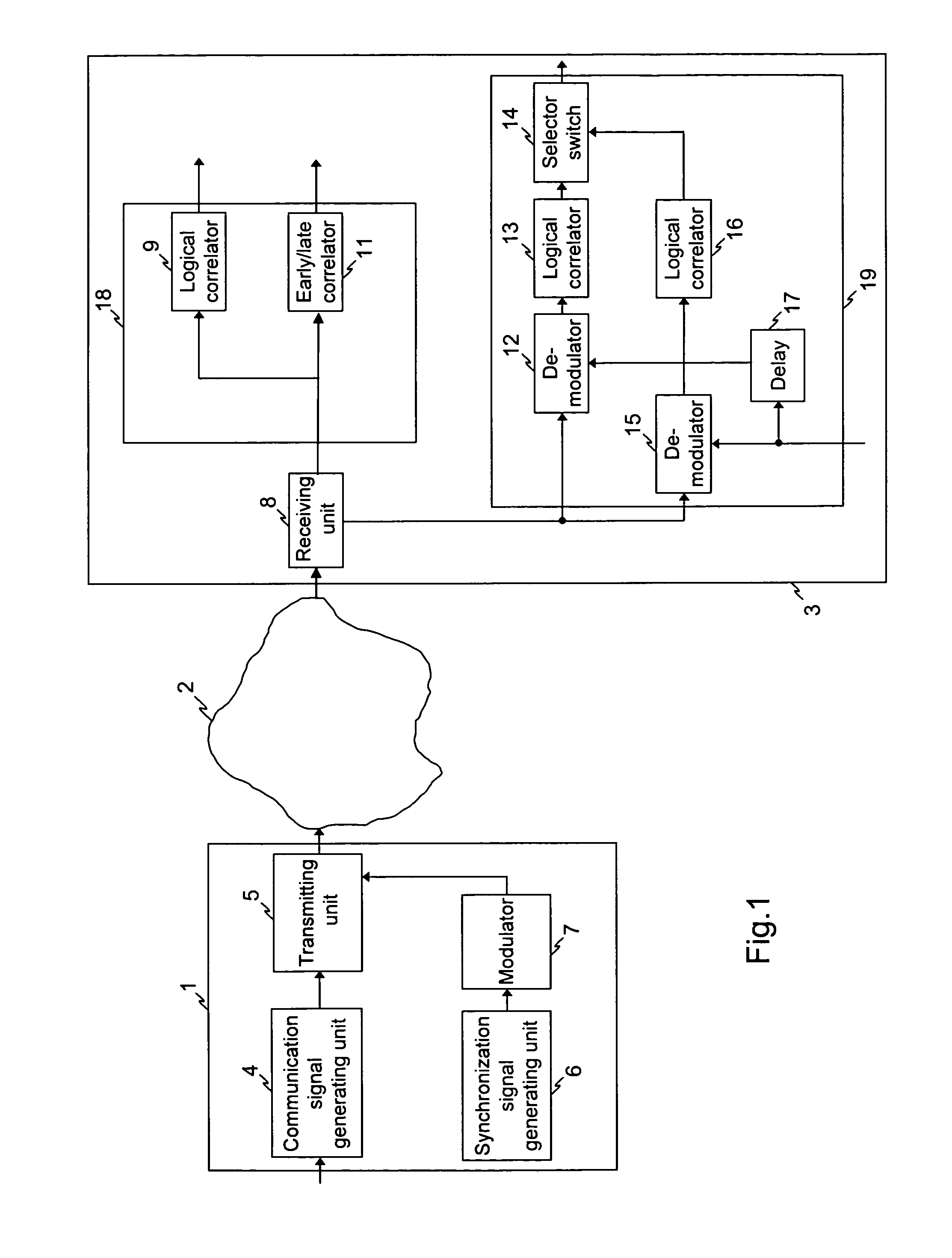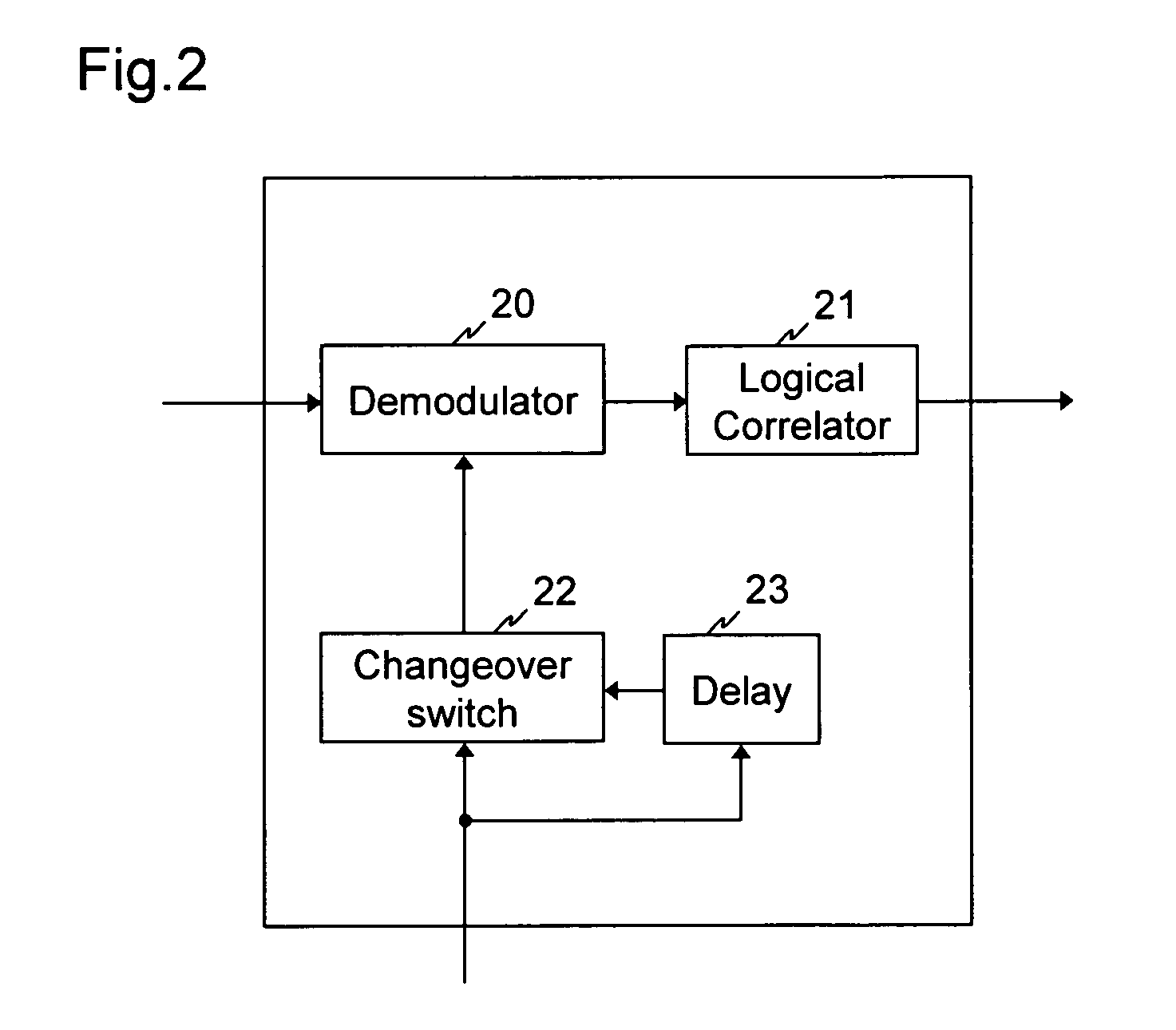Transmitting and receiving device for a multipoint-to-point network
a multi-point-to-point network and transmission and receiving technology, applied in radio transmission, electrical equipment, synchronisation signal speed/phase control, etc., can solve the problems of insufficient utilization of existing transmission capacity and inability to provide information transmission, so as to improve utilization of existing transmission capacity and minimize the influence of information transmission
- Summary
- Abstract
- Description
- Claims
- Application Information
AI Technical Summary
Benefits of technology
Problems solved by technology
Method used
Image
Examples
Embodiment Construction
[0016]The first practical example is now explained with the aid of FIG. 1. FIG. 1 shows a CDMA multipoint-to-point network 2 with a transmitting device 1 according to the invention and a receiving device 3 according to the invention. The CDMA multipoint-to-point network 2 represents that part of an interactive communications network which is provided for implementing the back channel. For the forward channel of the interactive communications network, which is provided for the transmission of broadband information, such as television signals, video signals, control signals, from an exchange to several terminal stations, no diagrammatical representation is shown for reasons of clarity. The forward channel can be implemented for example by a hybrid network, which starting out from the exchange links the terminal stations to one another via a distribution network of optical glass fibre cables and optical splitters to form a point-to-multipoint network. Instead of optical cables, electri...
PUM
 Login to View More
Login to View More Abstract
Description
Claims
Application Information
 Login to View More
Login to View More - R&D
- Intellectual Property
- Life Sciences
- Materials
- Tech Scout
- Unparalleled Data Quality
- Higher Quality Content
- 60% Fewer Hallucinations
Browse by: Latest US Patents, China's latest patents, Technical Efficacy Thesaurus, Application Domain, Technology Topic, Popular Technical Reports.
© 2025 PatSnap. All rights reserved.Legal|Privacy policy|Modern Slavery Act Transparency Statement|Sitemap|About US| Contact US: help@patsnap.com



